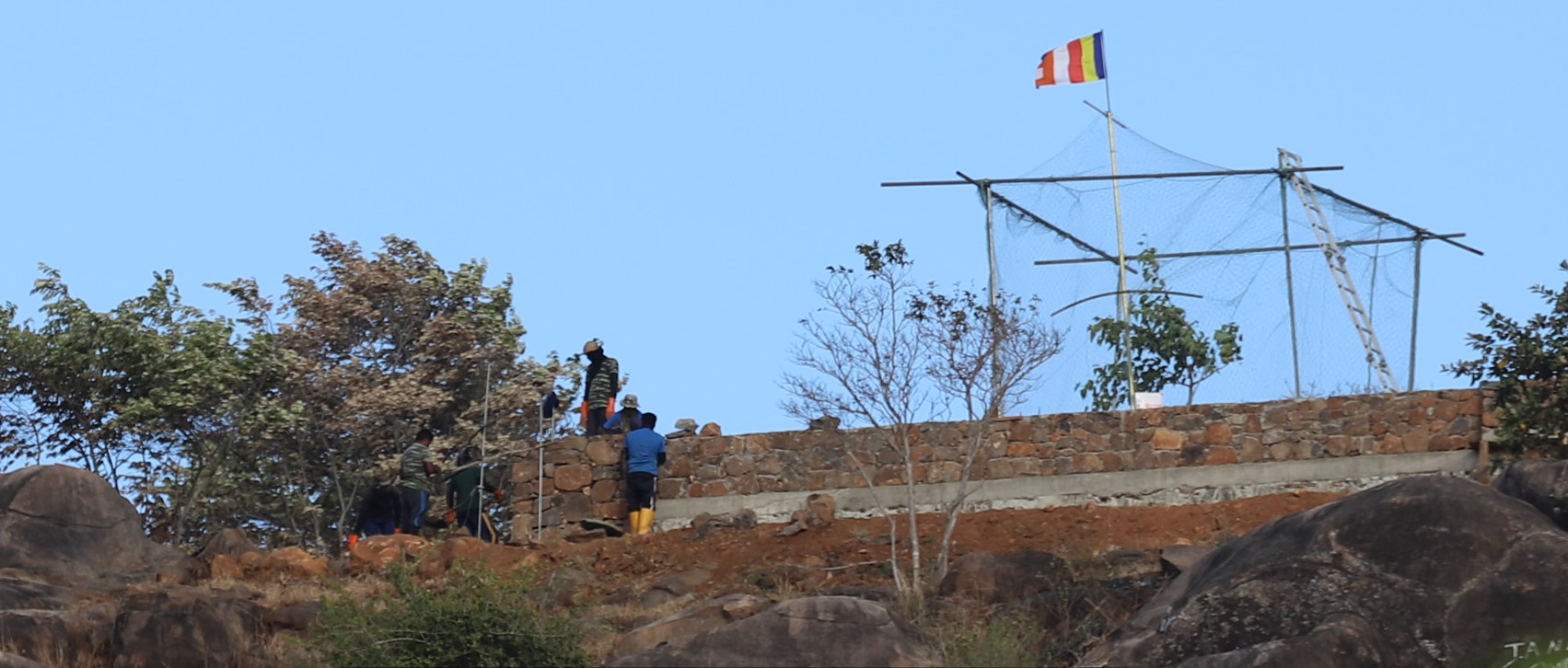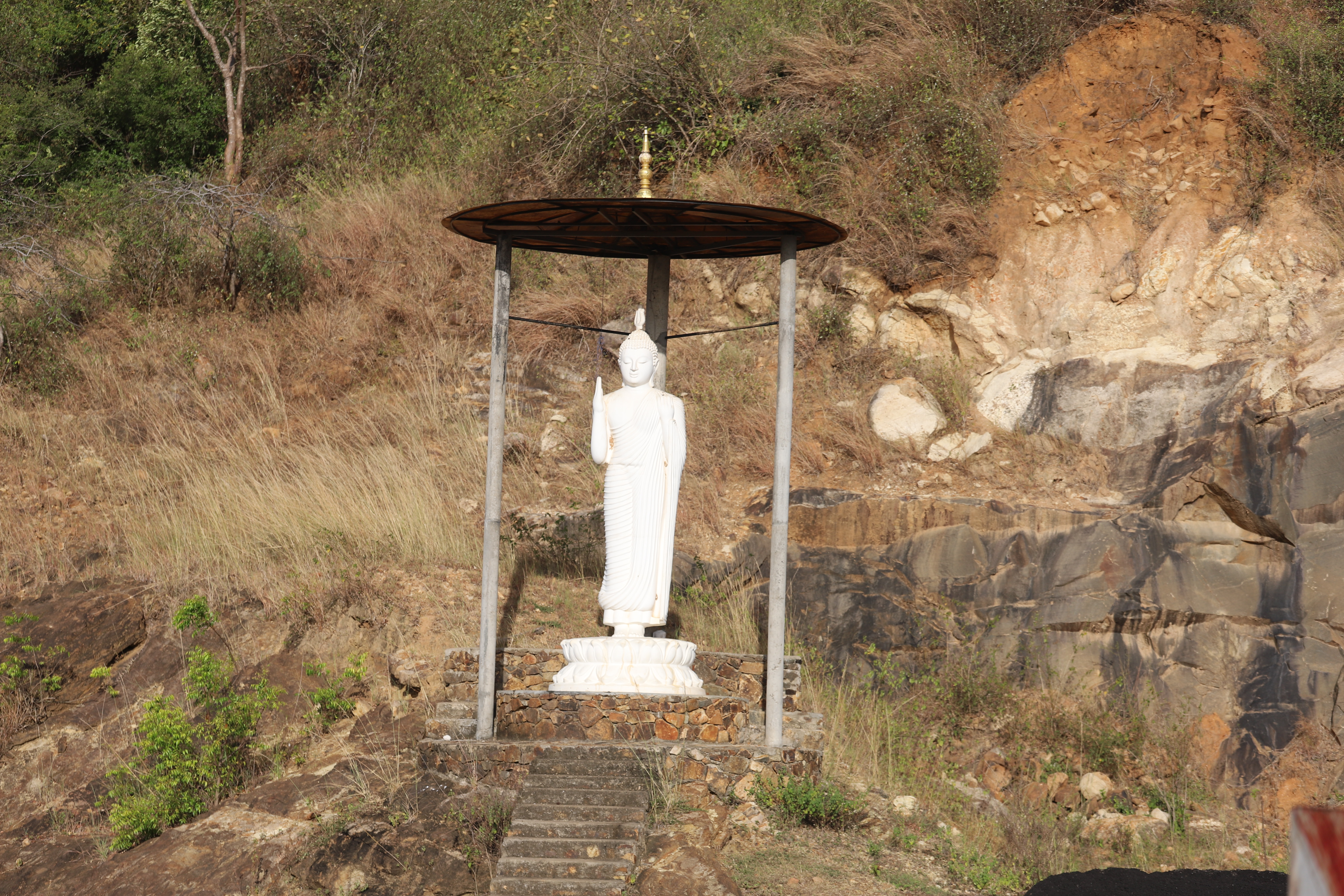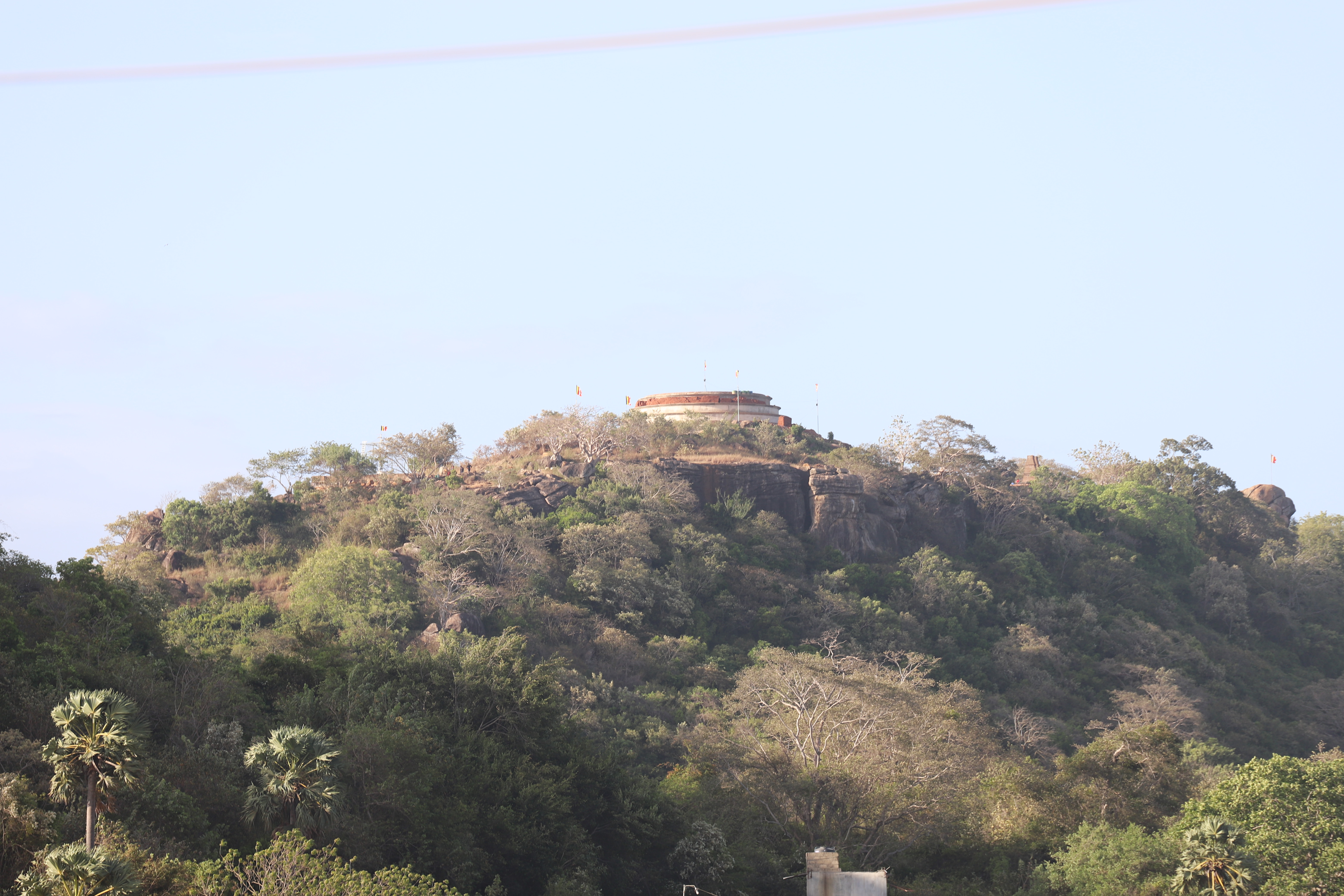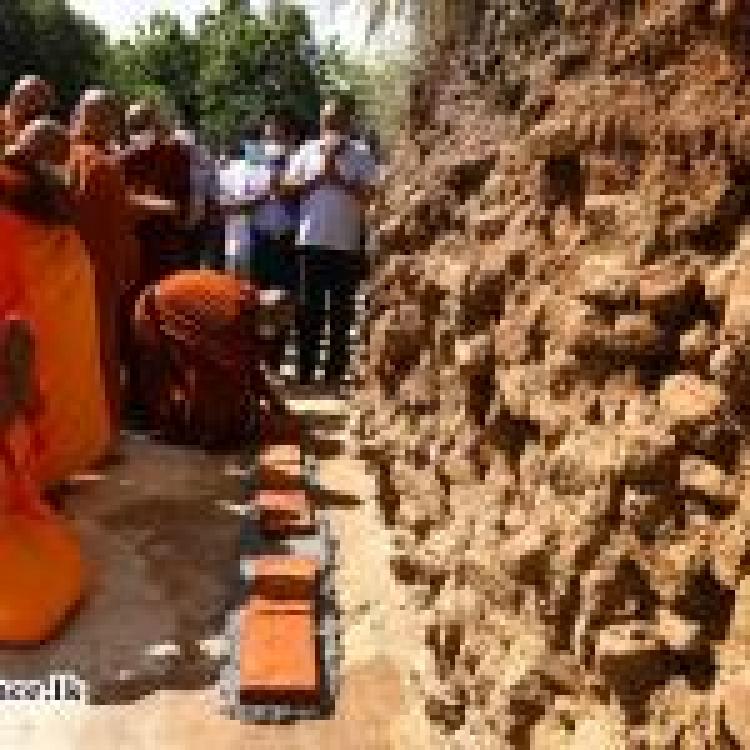
A new Buddhist vihara is being constructed in Muttur, a majority Tamil speaking area, with the aid of Sri Lanka's army and it's archaeology department.
Last December, a Buddha statue was erected by Buddhist monks under the cover of night in the Malayadi Pillaiyar temple area in Muttur, Trincomalee. The next day, local Tamils protested against the new statue and it was removed from the site by the police that same day.
Despite this, the local Tamil people have accused the army and the police of working to erect a Buddhist shrine on the hilltop where the Pillaiyar Temple is located. The locals have also accused the Land Survery Department of attempting to take over the Tamil land for the use of the Buddhist temple.
The Malayadi Pillaiyar Temple has been worshipped by the nearby Tamil people for many years and by the general public travelling along the Trincomalee-Batticaloa road.
The Tamil homeland has been subjected to decades of Sinhalisation but since the end of the armed conflict, there has been a rise in the establishment of Buddhist temples and Sinhala settlements through the appropriation of Tamil land. The government has used it's departments such as the archaeological and land survery departments to alter the demographics of the North-East.
In a recent report, People for Equality and Relief in Lanka (PEARL) highlight that since the end of the armed conflict in 2009, Sri Lanka's Director General of Archaeology "has ordered excavations and instructed district authorities to put up Buddhist structures on pre-existing Tamil worship sites and private Tamil lands, regardless of any opposition to it."
The advocacy organisation also notes how the state have justified Buddhisisation across the North-East by destroying and appropriating Tamil and Muslim places of worship to erect Buddhist shrines which in turn has provided "space and authority for Buddhist monks to influence the agenda" of the Sri Lankan government.







